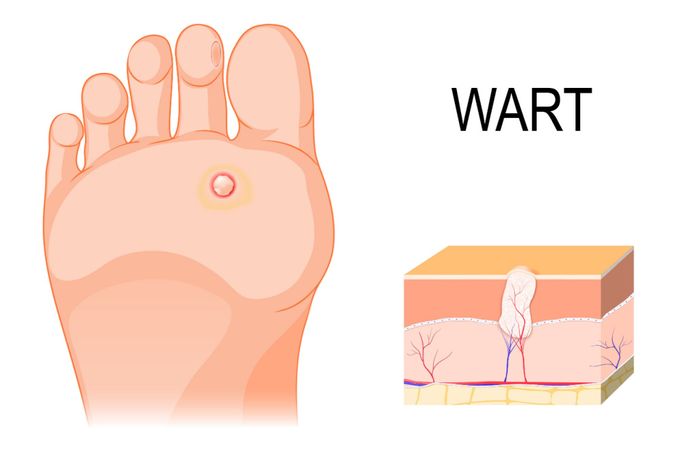How to Get Rid of Your Child’s Plantar Warts at Home
Updated December 5, 2024

Plantar warts, those unsightly and often uncomfortable skin growths that appear on the soles of children's feet, are a common problem that many parents grapple with. Despite their prevalence, there is a lot of misunderstanding about what causes these warts and how to effectively treat them.
Here, Kerry Seaman—a passionate podiatrist specialising in biomechanics, podopaediatrics, and foot therapy—joins us to demystify plantar warts in children and provide practical advice for treating and preventing them.
What are Plantar Warts?
Plantar warts are caused by the human papillomavirus (HPV), a type of viral infection with many different strains that can affect various parts of the body. In children, these warts often occur due to their developing immune systems and their increased exposure to various surfaces, such as the floors of swimming pools, preschools, or other communal spaces.
Did You Know?
There are over 100 different types of HPV, but only a few are known to cause plantar warts.
Children with certain genetic predispositions, anxiety, and those who engage in habits like skin picking or nail biting, are more susceptible to warts.
“Approximately 30% of skin conditions may be related to stressors within the body or anxiety-related issues.”
» Learn how to waterproof your child's shoes
Risk Factors for Plantar Warts in Children
There are several risk factors that increase the likelihood of a child developing plantar warts. These include ill-fitted footwear, which can create skin abrasions that provide an entry point for the virus, and a weakened immune system.
Skin conditions, such as excessive moisture caused by non-breathable shoes or hot climates, can also increase susceptibility. Family history, poor hygiene, and certain activities that expose children to calluses, can also play a role.
Identifying Plantar Warts
Identifying plantar warts early can help to minimize their impact. These warts typically appear in areas of high loading on the foot, such as the heel and around the big toe. They may also appear between the toes or where the foot brushes against the inside of the shoe. The presence of black dots on the skin can be a primary diagnostic tool. A simple pinch test can also be conducted to check for pain, although not all warts are painful.
» Pick the best durable sneakers for active playtimes
At-Home Remedies for Plantar Warts
“Prevention is the first step, with regular hygiene and shoe care.”
Washing clothes at higher temperatures can help to kill the virus, and boosting the immune system through a well-rounded diet and vitamin C supplements can also be beneficial. In terms of topical treatments, apple cider vinegar, nail varnish, and tea tree oil can all be useful in treating plantar warts.
Keep in mind that excessive treatment can lead to over-moisturising and the spread of the infection.
Supplements and Vitamins for Plantar Warts
Boosting the immune system can play a critical role in fighting off plantar warts. Vitamin C is a go-to supplement because it enhances the body's immune response and promotes good cell regeneration. This helps the body to fight off the infection and to recover more quickly.
Medical Treatments for Plantar Warts
In addition to at-home remedies, there are also medical treatments available for plantar warts. Salicylic acid is a common ingredient in many over-the-counter wart treatments. The acid works by helping to remove the wart layer by layer.
Another treatment option is silver nitrate, which is often used by clinicians to treat plantar warts. However, this should be applied carefully as it can be painful if there is excessive bleeding.
Preventing Plantar Warts in Children
Preventing plantar warts involves a multi-pronged approach. Examining family history can help to identify potential vulnerabilities. Good hygiene practices, especially in relation to socks, shoes, and shower environments, can also play a key role.
Regular inspection of feet for signs of warts, ensuring shoes are well-fitted, and being cautious about the materials in the soles of children's shoes can all help to prevent plantar warts.
» Make sure your kids' shoes are properly sized
Walking Away from Plantar Warts
While plantar warts in children are common, they can be effectively treated and even prevented with the right measures. By understanding the risk factors and identifying warts early, parents can take appropriate steps to ensure their child's feet remain healthy.







